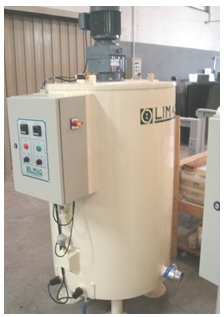Automatic Control and Mathematical models for Three Phase Transformer using MATLAB
DOI:
https://doi.org/10.54741/asejar.2.5.5Keywords:
matlab, transformer, mathematical modelAbstract
Our paper's primary goal is to use MATLAB to create a tool for transformer design. Manufacturers of transformers can expand their design capacity and save design man-hours by using the suggested methodology, which has several benefits. By running the values through the MATLAB software, we can construct a distribution transformer with any value (power, primary voltage/secondary voltage), a 50 HZ frequency, and a delta/star, shall and core type, oil immersed natural cooling design. In comparison to conventional methods using the same set of constraints, the dimensions as well as the active cost have been decreased. Therefore, this study shows how to use MATLAB to build power transformers in a better and more effective manner. Even though it is anticipated that the present power load will increase by 150% in 2017, it is challenging to find a solution to improve the capacity of facilities, particularly for power transformers. Using MATLAB to create a transformer design will be beneficial in the future.
Downloads
References
S. W. Lee, W. S. Kim, S. Y. Han, Y. I. Hwang, & K. D. Choi. (2006). Conceptual design of a single phase 33 MVA HTS transformer with a tertiary winding. The Korean Superconductivity Society, 7(2), 162–166.
W.-S. Kim et al. (2005). Fabrication and test of multiple HTS wire with transposition for HTS power transformer. Magnet Technology, 19.
Y.-I. Hwang et al. (2005). Continuous disk type HTS winding of high voltage power transformer. Magnet Technology, 19.
M. Wilson. (1983). Superconducting magnet. New York: Clarendon Press.

Downloads
Published
How to Cite
Issue
Section
ARK
License
Copyright (c) 2023 Ankur Saxena, Arvind Verma

This work is licensed under a Creative Commons Attribution 4.0 International License.
Research Articles in 'Applied Science and Engineering Journal for Advanced Research' are Open Access articles published under the Creative Commons CC BY License Creative Commons Attribution 4.0 International License http://creativecommons.org/licenses/by/4.0/. This license allows you to share – copy and redistribute the material in any medium or format. Adapt – remix, transform, and build upon the material for any purpose, even commercially.










